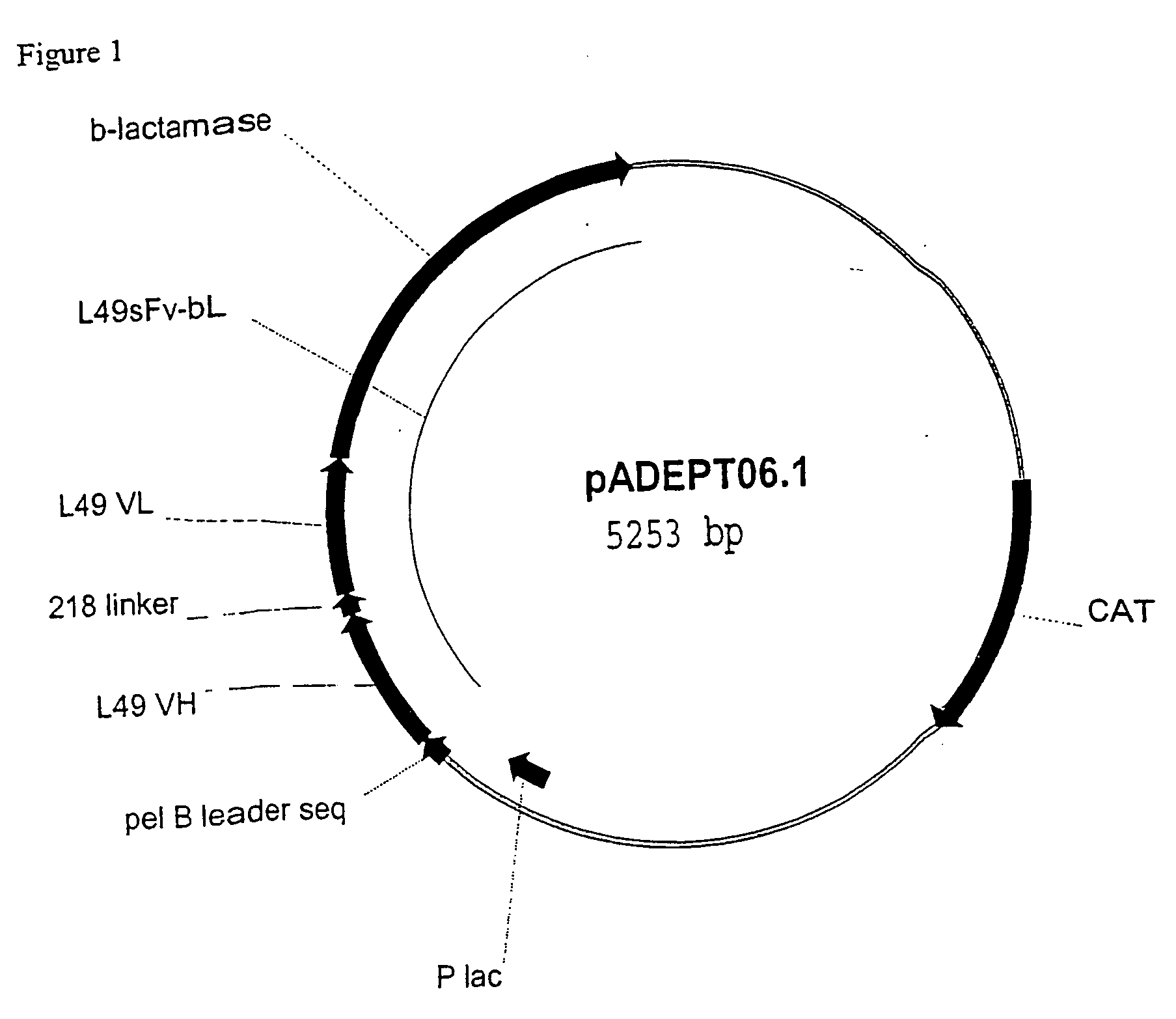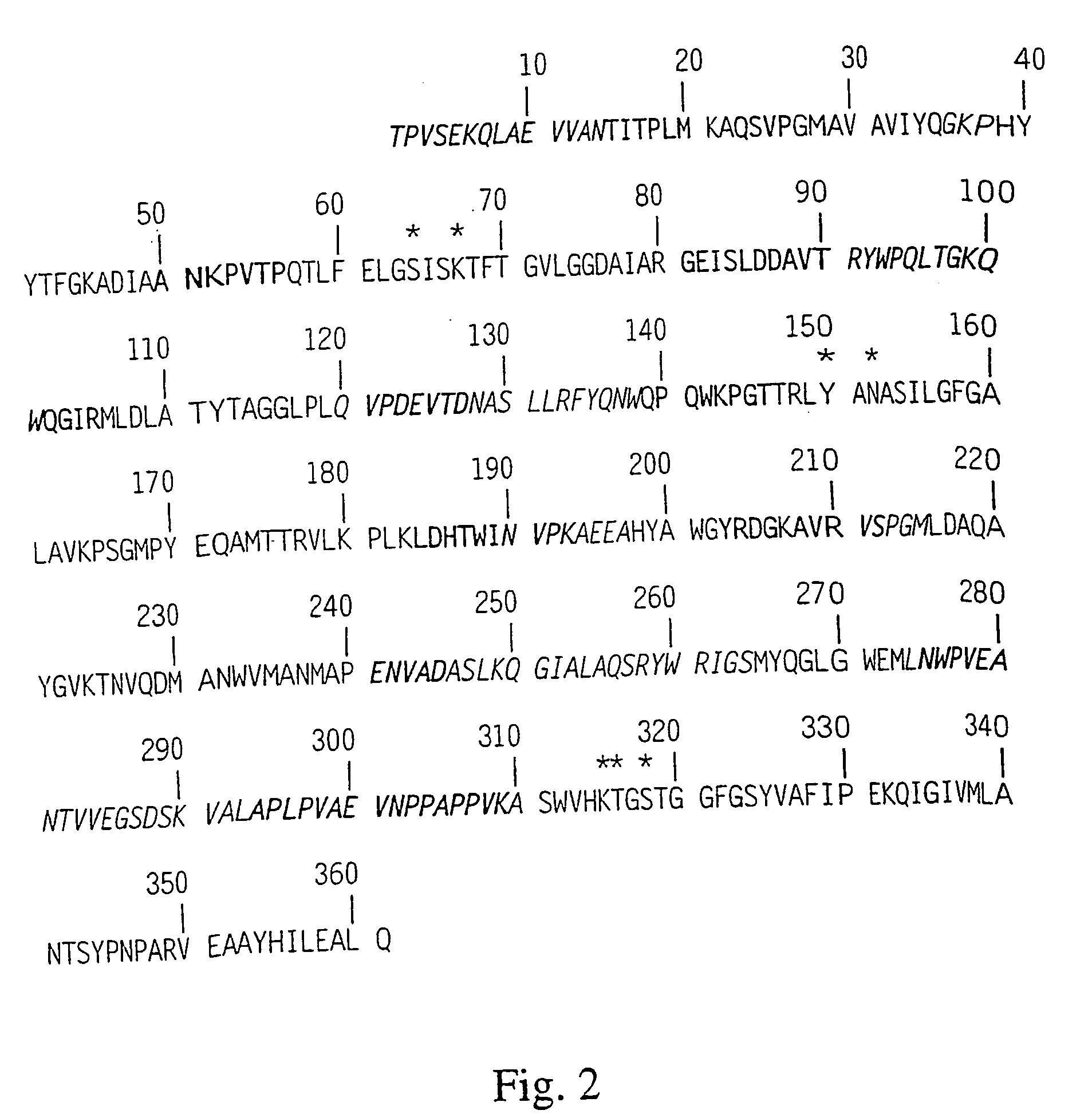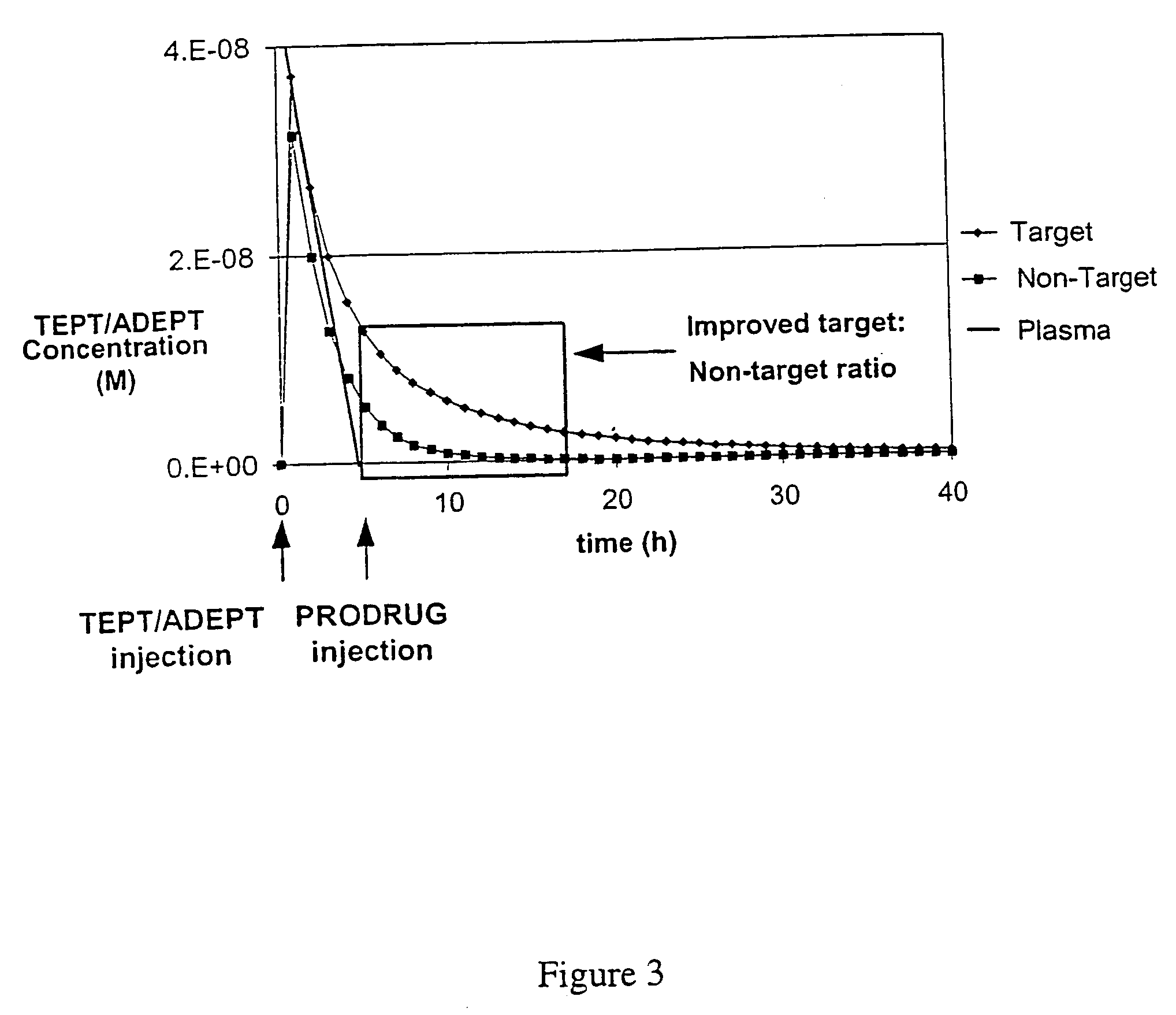Methods and compositions for milieu-dependent binding of a targeted agent to a target
- Summary
- Abstract
- Description
- Claims
- Application Information
AI Technical Summary
Benefits of technology
Problems solved by technology
Method used
Image
Examples
example 1
SGN17 His Scan Method
[0272] This example demonstrates that a non-milieu dependent targeting agent can be modified to generate a milieu-dependent targeting agent.
[0273] pADEPT06 DNA Template:
[0274] This plasmid is 5.2 kb and encodes a single chain antibody variable region fragment (scFv) fused to β-lactamase (BLA) with a pelB leader sequence, and is driven by a lac promoter (P lac) (FIG. 1). The plasmid also carries a chloramphenicol resistance gene (CAT) as a selectable marker. This particular SGN17 plasmid was made by a 3-piece ligation utilizing a linker. Two plasmids were used to make pADEPT06: pCB04 for the vector fragment with the pel B leader sequence, and pCR13 for the scFv-b1a gene. pCBO4 was digested with HindIII and DraIII (both from New England Biolabs, Beverly, Mass.) resulting in a 2.7 kb fragment with the pCB04 backbone. pCR13 was digested with NdeI (Roche Molecular Biochemicals, Indianapolis, Ind.) and DraIII resulting in the 2.4 kb fragment containing the fusion p...
example 2
Affinity Maturation of an scFv by Site Saturation Scanning Mutagenesis
[0302] A. Generation of Site Saturation Libraries
[0303] 64 site saturation mutagenesis libraries were generated. In each of these libraries, one codon, that codes for a CDR position (as defined by the Kabat nomenclature) in ME66.4-scFv, exactly the same as ME66, was randomized. The libraries were generated using the QuikChange protocol (Stratagene, La Jolla, Calif.) essentially as recommended by the manufacturer. Each reaction used two mutagenic oligonucleotides which had the following design: 17 perfect matches flanking the random codon on each side, NNS in place of the random codon. For example, library ME67 used the forward primer CTGGCGACTCCATCACCNNSGGTTACTGGAACTGGAT and the reverse primer ATCCAGTCCAGTAGTAACCSNNGGTGATGGAGTCGCCAG, where N represents a mixture of A, T, G, anti C and S represents a mixture of G and C. This approach allows for the generation of 32 different codons which encode all 20 amino acids...
example 3
Stabilization of an scFv
[0309] A. Construction of pME27.1
[0310] Plasmid pME27.1 was generated by inserting a Bgl I EcoRV fragment encoding a part of the pelB leader, the CAB1-scFv and a small part of BLA into plasmid the expression vector pME25. The insert, encoding for the CAB1-scFv, has been synthesized by Aptagen (Herndon, Va.) based on the sequence of the scFv FE-23 that was described in [Boehm, M. K., A. L. Corper, T. Wan, M. K. Sohi, B. J. Sutton, J. D. Thornton, P. A. Keep, K. A. Chester, R. H. Begent and S. J. Perkins (2000) Biochem J 346 Pt 2, 519-28, Crystal structure of the anti-(carcinoembryonic antigen) single-chain Fv antibody MFE-23 and a model for antigen binding based on intermolecular contacts]. Both the plasmid containing the synthetic gene (pPCR-GME1) and pME25 were digested with BglI and EcoRV, gel purified and ligated together with Takara ligase. Ligation was transformed into TOP10(Invitrogen, Carlsbad, Calif.) electrocompetent cells, plated on LA medium cont...
PUM
| Property | Measurement | Unit |
|---|---|---|
| Fraction | aaaaa | aaaaa |
| Fraction | aaaaa | aaaaa |
| Length | aaaaa | aaaaa |
Abstract
Description
Claims
Application Information
 Login to View More
Login to View More - Generate Ideas
- Intellectual Property
- Life Sciences
- Materials
- Tech Scout
- Unparalleled Data Quality
- Higher Quality Content
- 60% Fewer Hallucinations
Browse by: Latest US Patents, China's latest patents, Technical Efficacy Thesaurus, Application Domain, Technology Topic, Popular Technical Reports.
© 2025 PatSnap. All rights reserved.Legal|Privacy policy|Modern Slavery Act Transparency Statement|Sitemap|About US| Contact US: help@patsnap.com



